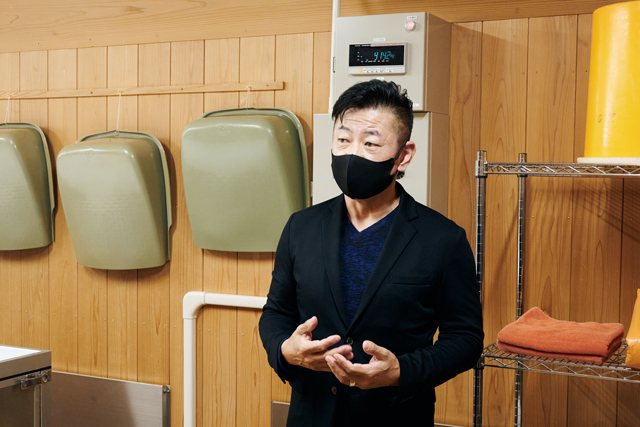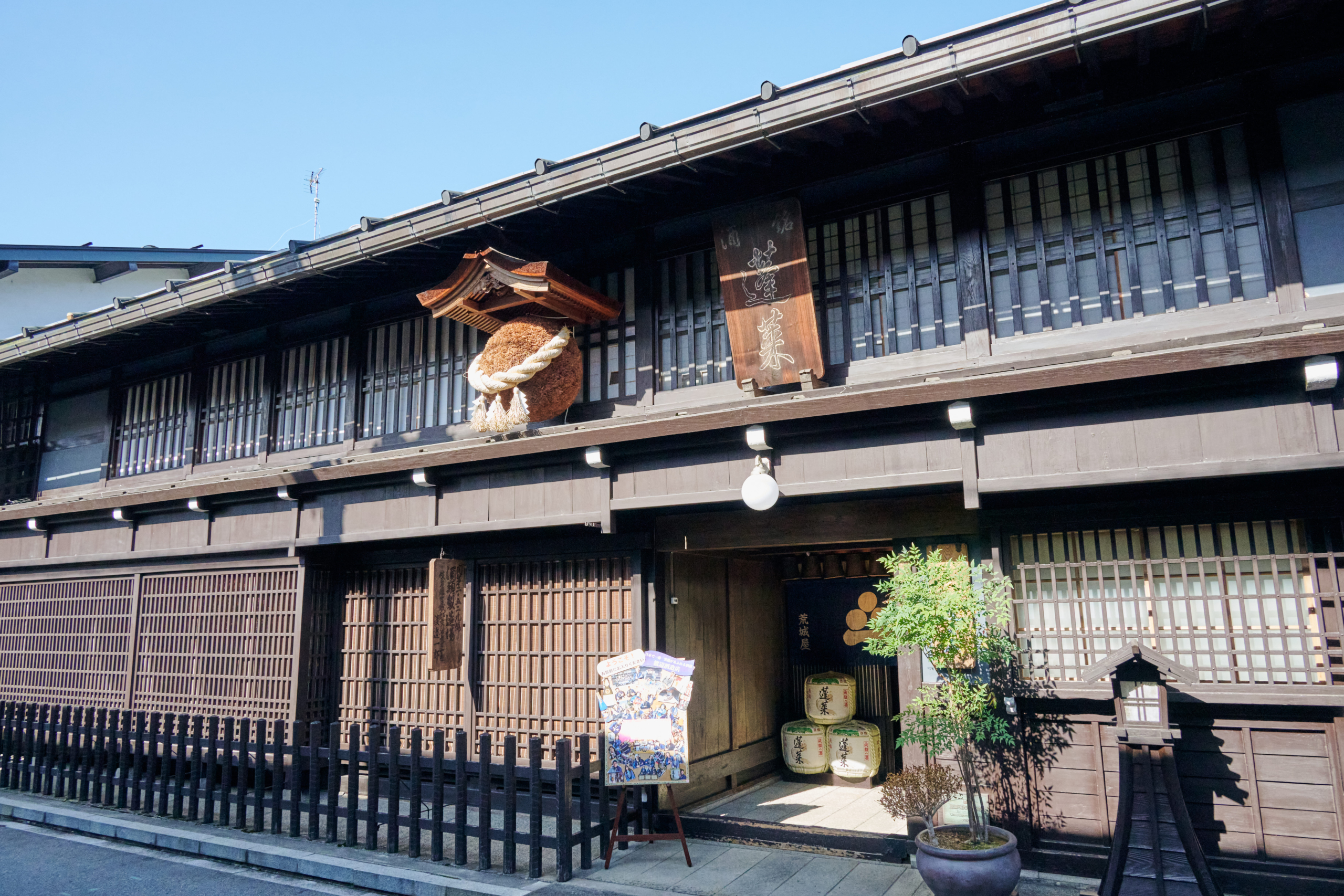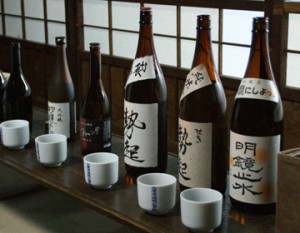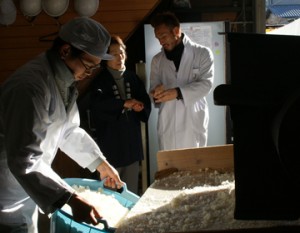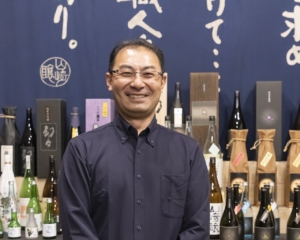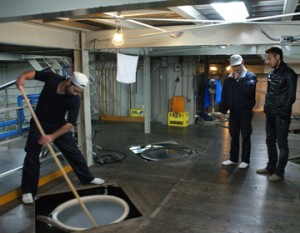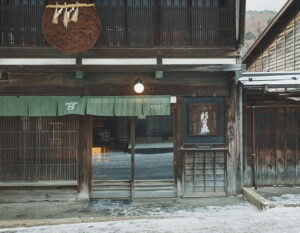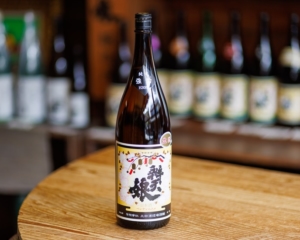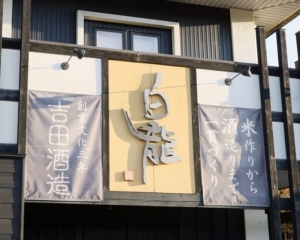Sake from Hida recognized around the world
Furukawa Town in Hida City is located in the northernmost part of Gifu Prefecture. Surrounded by mountains over 3,000 meters high, Furukawa-cho in Hida City is also called the “back seat of Takayama,” with the Setogawa River flowing through the center of the town with 1,000 colorful carp swimming in the water, and a row of town houses and white-walled storehouses where the skills of Hida craftsmen are still alive, giving the town the atmosphere of a good old castle town. The clean water and tasty rice in Furukawa-cho and Takayama-shi, which are ideal for sake brewing, have been popular among tourists visiting the area. However, as is the case throughout Japan, the number of sake breweries has been on the decline in recent years. The Watanabe Sake Brewery has won more awards than any other sake brewery in the world and is expanding its sales channels overseas.
The Watanabe Sake Brewery began brewing sake in 1876. Until then, the Watanabe family had been engaged in the money exchange business and raw silk trade, but when Kyuemon Akira V was fascinated by the delicious sake he tasted on a trip to Kyoto, he started brewing his own sake. The representative brand name is “Horai,” which is named after an auspicious “sake word” that brings people happiness and good fortune, and after the peach garden of longevity where hermits are said to dwell. It has been 20 years since Hisanori Watanabe, the ninth generation of the brewery’s founder, took the helm of the brewery. In order to rebuild the brewery, which was in financial crisis at the time, Mr. Watanabe took a “market-in” approach. In other words, instead of selling sake that the brewer wanted to make, he listened sincerely to the voices of potential customers, analyzed the reasons why his sake was not selling, and proposed sake that the customers wanted to drink. Based on these ideas, he developed products and thoroughly considered how to sell them.
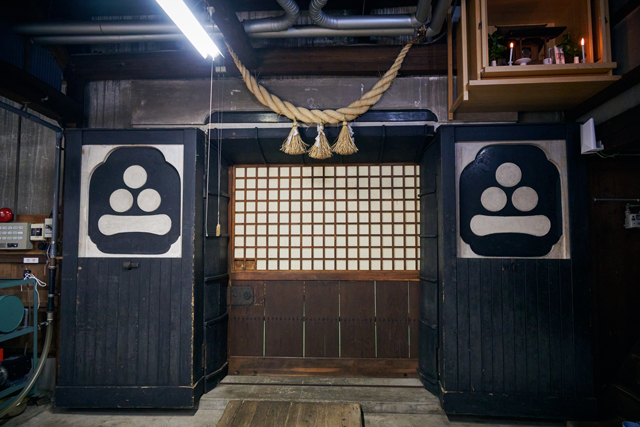
Ideas for “hidden sake” that are special and appealing
For example, the “brewer’s hidden sake” product, which became a big hit, involves the sale of sake that is entered in a competition or reserved for VIPs visiting the brewery. The idea came from a consumer who happened to come into the store and see the sake stored in the store’s refrigerator wrapped in newspaper and asked for the sake to be given away. Watanabe Shuzoten had been keeping these not-for-sale sake in the best possible condition by wrapping them in newspaper to block out the light, but when Watanabe realized that the rarity of this “special sake that cannot be drunk normally” and the indescribably special feeling of having newspaper wrapped around it would appeal to consumers, he decided to commercialize the product. Marketing research on the taste also revealed that, in contrast to the dry sake popular in the market, there was a demand for a crisp sweet sake, and the concept was to create a genuine dry sake with the original umami of rice, mellowness, and a refreshing sharpness. The catchy name “hidden sake” and the unexpectedness of the project were well received, and it has become a core product of the Watanabe Shuzo Brewery. Another hit product is the “Garigari Gyokogenshu,” which can be stored at room temperature and drunk on the rocks. This product was created after listening to customers who said that the ostentatious storage requirements of refrigerators were bothersome and that they did not have space to keep sake cool.
Behind the creation of these ideas one after another lies the underlying spirit of “Sake Is Entertainment” that Mr. Watanabe upholds. In the sake industry, which is becoming increasingly polarized between inexpensive industrial products and artistic luxury products, Mr. Watanabe wants to make it easier for people to enjoy delicious sake and bring a smile to their faces from the bottom of their hearts. After carefully listening to the voices of our customers, we have learned that sake has always been appreciated not only for its taste, but also for the experience of tasting and conversing with other people. We would like to create a sake wonderland here in Hida, so that people from all over the world can visit this region and enjoy sake. I want to create sake fans all over the world. Mr. Watanabe says with a twinkle in his eye. Just like Matsuo Basho, who advocated the “fashion of the simple and the fashionable,” Mr. Watanabe will continue to introduce sake culture to the world from Gifu’s little Kyoto, while preserving what must not change even as the world changes and proactively introducing new things.

